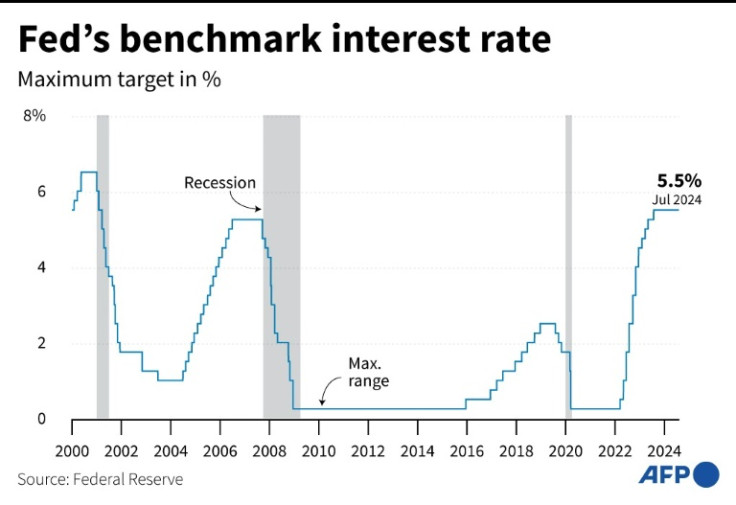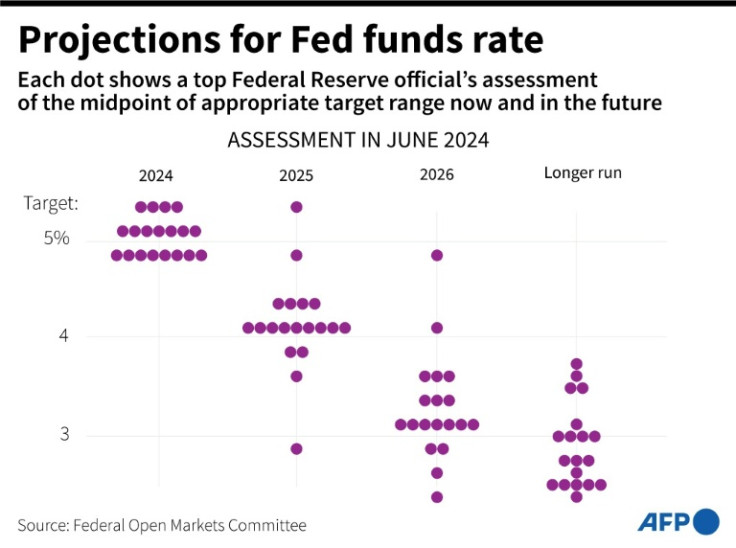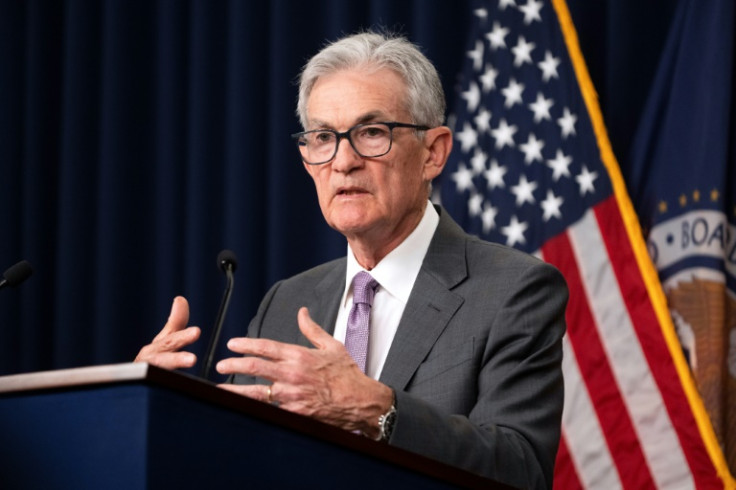US Fed Chair Expected To Signal Support For Rate Cuts

US Federal Reserve chair Jerome Powell is widely expected to use a keynote speech at a major central banking conference on Friday to signal support for cutting interest rates ahead of next month's rate decision.
The annual Jackson Hole Economic Symposium in the US state of Wyoming gives Powell a global platform to enlighten financial markets about the Fed's thinking, a few weeks after he said policymakers could cut rates "as soon as" September if the labor market remains solid and inflation continues to ease.
The Fed's benchmark lending rate currently sits at a 23-year high of between 5.25 and 5.50 percent, cooling demand in the world's largest economy ahead of November's presidential elections, in which inflation and the cost of living have taken a central role.
"My sense is that chairman Powell is going to use this symposium to kind of foreshadow what's already largely placed in the market," Nationwide Mutual chief economist Kathy Bostjancic told AFP.
Powell will likely signal -- but not explicitly say -- that the Fed "is looking to start to cut interest rates sooner rather than later, and it's most likely going to be in September," she said.
"He will likely signal that a rate cut is coming soon," Deutsche Bank chief US economist Matthew Luzzetti told AFP. "However, I think he will not indicate the probable size of that rate cut."
Several other high-ranking central bank officials are on the schedule for the three-day gathering in Wyoming's Grand Teton National Park, which this year has the theme of "Reassessing the Effectiveness and Transmission of Monetary Policy."
After holding its key lending rate at a two-decade high for more than a year, the US central bank now seems poised to start cutting rates in September, as inflation continues to ease towards its long-term two percent target.
While inflation has eased, the labor market has shown signs of cooling -- though still remaining solid by historical standards -- and economic growth has been resilient.
The Fed has a dual mandate from Congress to tackle both inflation and unemployment, and has been signaling in recent months that the risks to the two sides of its mandate are now coming into better balance.
Earlier this week, the minutes of the Fed's July rate decision spelled out the likely direction of travel: Most members of the bank's rate-setting committee said it would likely be "appropriate" to cut rates at the next meeting, if the data continued to come in as expected.
"Inflation gives them the reason to start to cut rates," said Bostjancic from Nationwide Mutual, adding that the labor market data would likely dictate how aggressively they did so.
Many analysts expect the Fed to move ahead with a more cautious quarter percentage-point rate cut in September, but see a larger half-point cut as a possibility -- depending on upcoming data.
Futures traders put the chances of a smaller cut in September around 75 percent, and the probability of a bigger cut at approximately 25 percent, according to data from CME group.
Powell is unlikely to come out strongly in favor of either move on Friday, said Luzzetti from Deutsche Bank.
The decision to cut by 25 or 50 basis points "will depend on how the data come in over the next month or so, and importantly, what the next jobs report looks like," he said.
A weaker jobs report would likely raise the chances of a larger half-point cut, he added.
Back in June, Fed officials reacted to a small uptick in inflation in the first quarter by penciling in just one expected rate cut for 2024.
Since then, inflation has returned to its downward trajectory, and analysts have raised their rate cut forecasts.
Both Bostjancic and Luzzetti see three quarter-point cuts in the remaining three rate decisions this year as the most likely scenario.
This would cut the Fed's benchmark lending rate by 75 basis points, lowering it to between 4.50 and 4.75 percent.
But the financial markets think the Fed could go further still.
Futures traders have placed a probability of roughly 65 percent that the Fed will move ahead with at least a percentage point of cuts this year, according to data from CME Group.



© Copyright AFP 2025. All rights reserved.





















